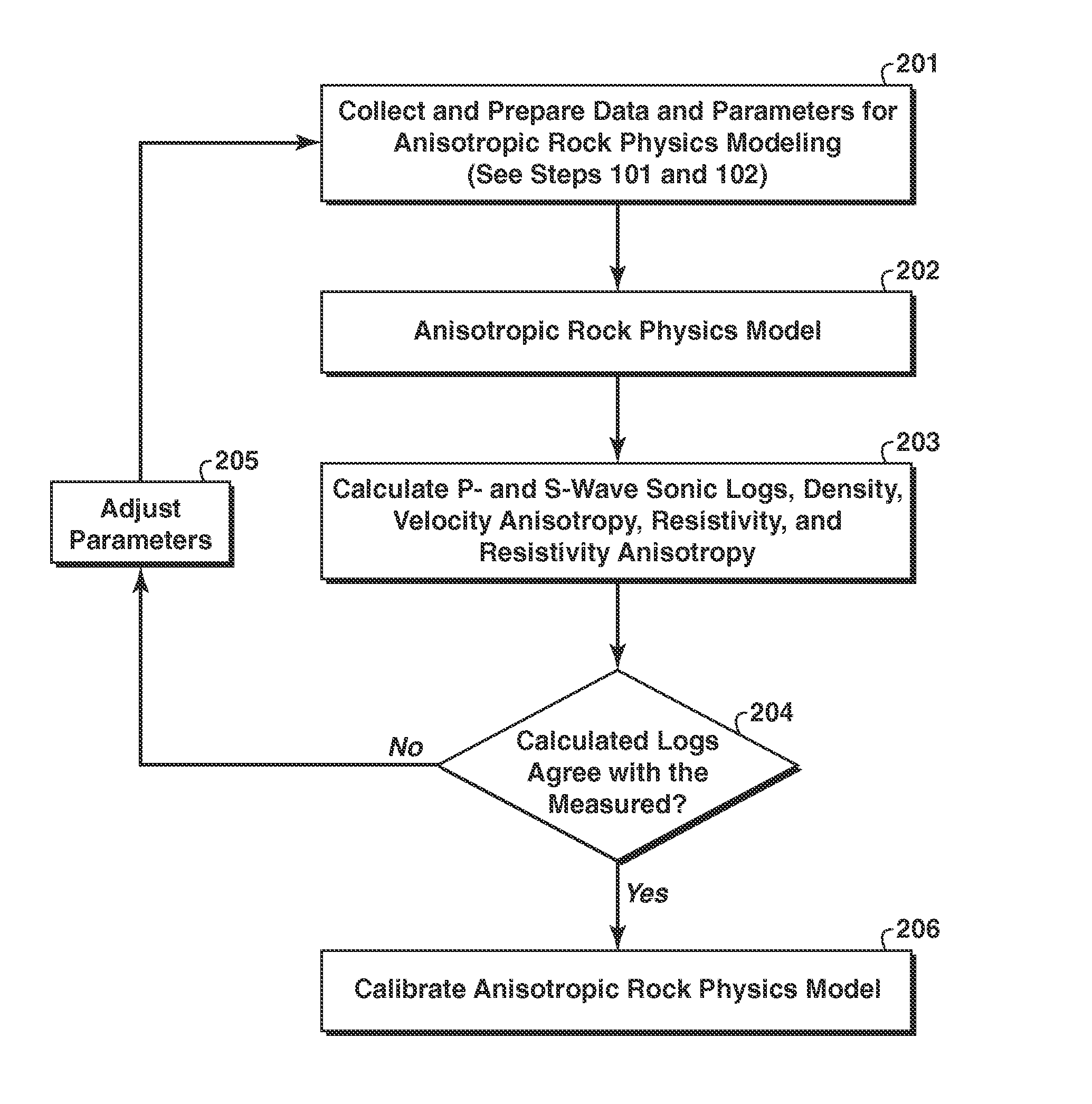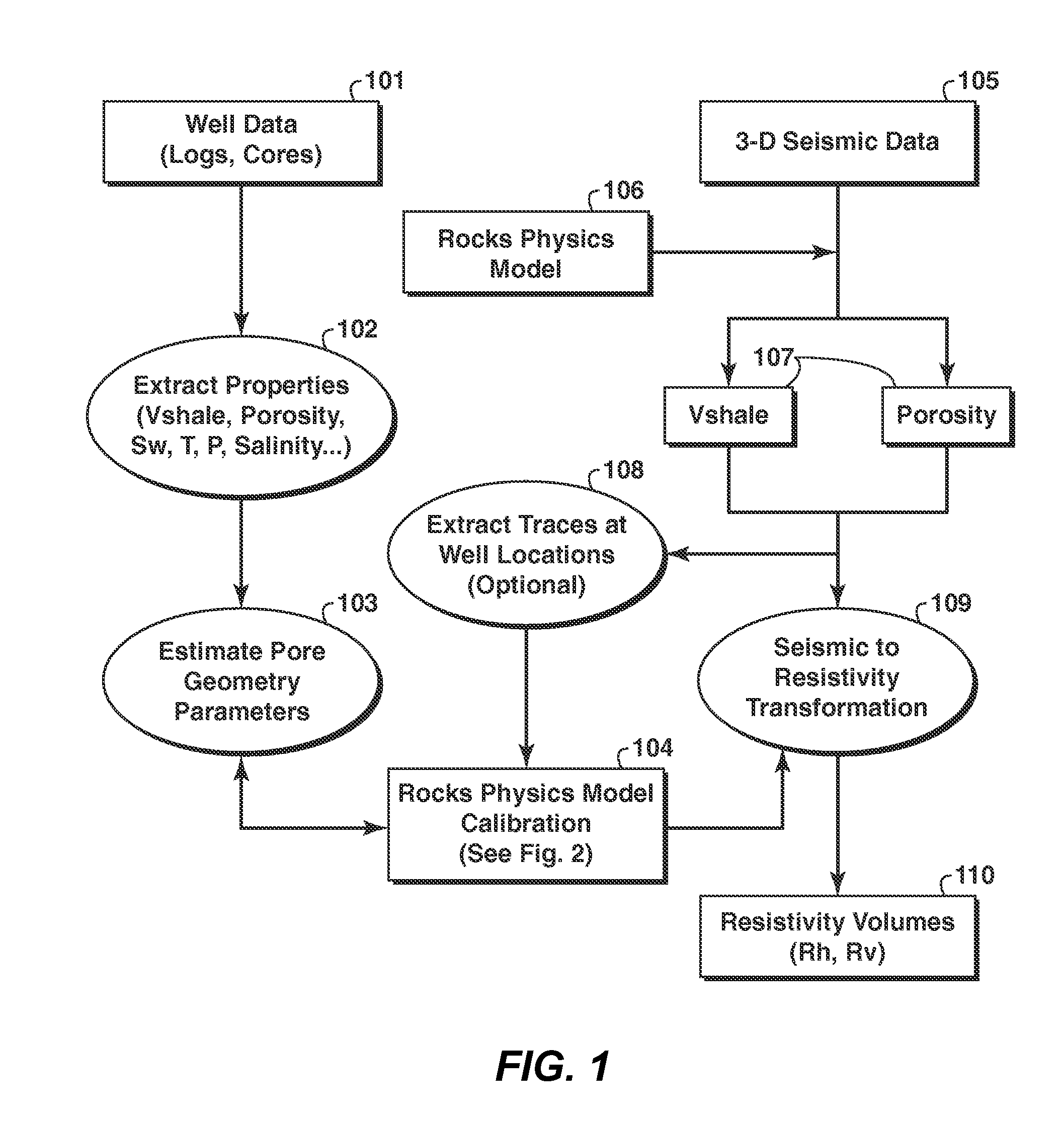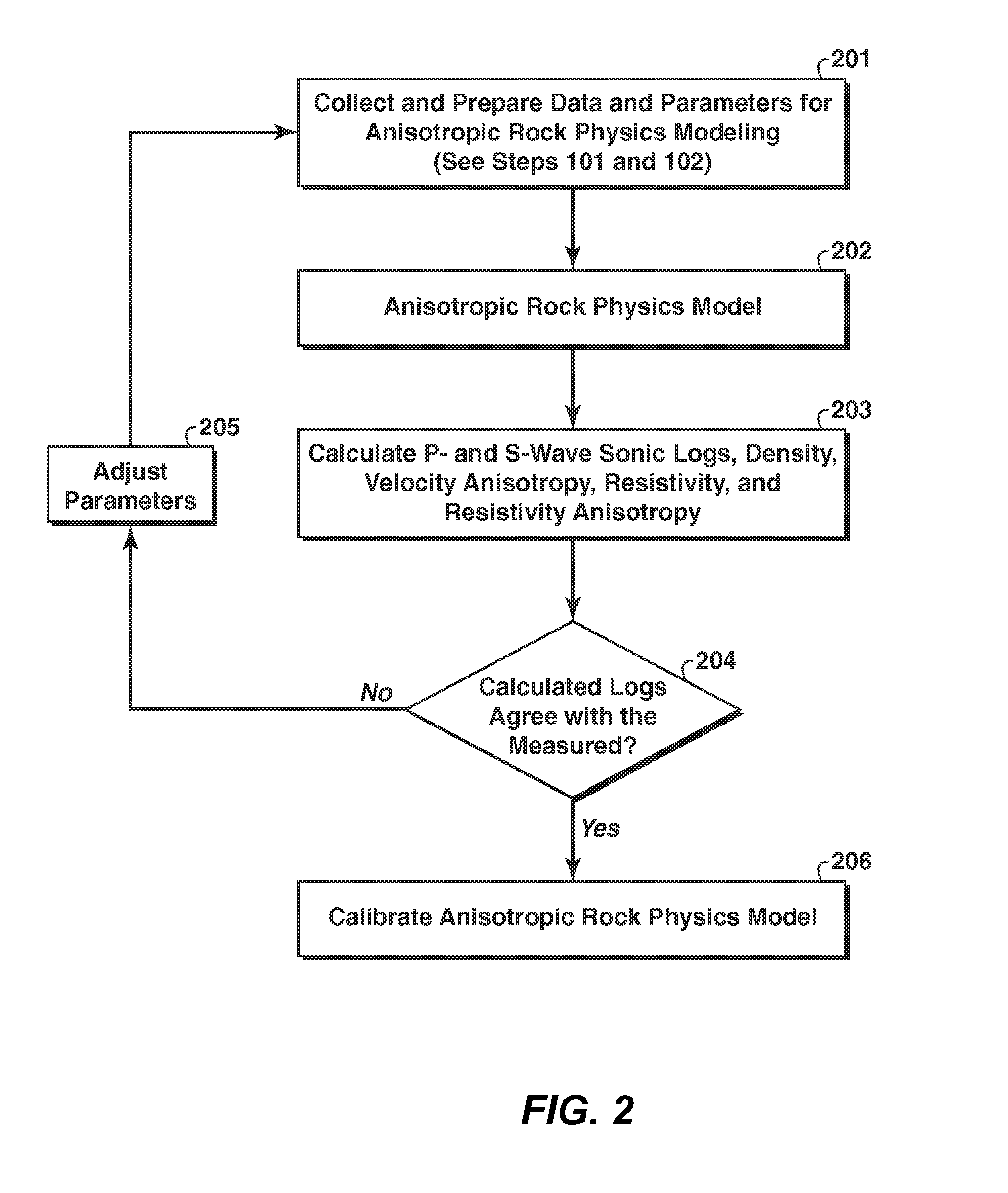Method for generating anisotropic resistivity volumes from seismic and log data using a rock physics model
anisotropic resistivity technology, applied in seismology for waterlogging, borehole/well accessories, instruments, etc., can solve the problems of inability to include all factors in a rock physics model, many hydrocarbon reservoirs are relatively deep, and many hydrocarbon reservoirs have undergone tremendous overburden forces
- Summary
- Abstract
- Description
- Claims
- Application Information
AI Technical Summary
Benefits of technology
Problems solved by technology
Method used
Image
Examples
Embodiment Construction
[0030]Predicting one physical property from another is important in the sense that it offers a possibility of inferring a property that is more difficult to estimate from a second property that has proved to be easier and more reliable to estimate. It also provides calibration of the measurements. In principle, the transformation between seismic velocity and resistivity is possible, i.e., by knowing anisotropic velocity, to obtain anisotropic resistivity, and vice versa. In practice, however, one may more profitably look for a way to predict resistivity from seismic data instead of predicting velocity from resistivity data because 3D resistivity data have much lower resolution.
[0031]In principle, cross-property relationships between velocity anisotropy and resistivity anisotropy can be achieved if an appropriate anisotropic rock physics relationship (i.e., an anisotropic constitutive equation) for velocity and resistivity is established. However, it is important to realize that diff...
PUM
 Login to View More
Login to View More Abstract
Description
Claims
Application Information
 Login to View More
Login to View More - R&D
- Intellectual Property
- Life Sciences
- Materials
- Tech Scout
- Unparalleled Data Quality
- Higher Quality Content
- 60% Fewer Hallucinations
Browse by: Latest US Patents, China's latest patents, Technical Efficacy Thesaurus, Application Domain, Technology Topic, Popular Technical Reports.
© 2025 PatSnap. All rights reserved.Legal|Privacy policy|Modern Slavery Act Transparency Statement|Sitemap|About US| Contact US: help@patsnap.com



